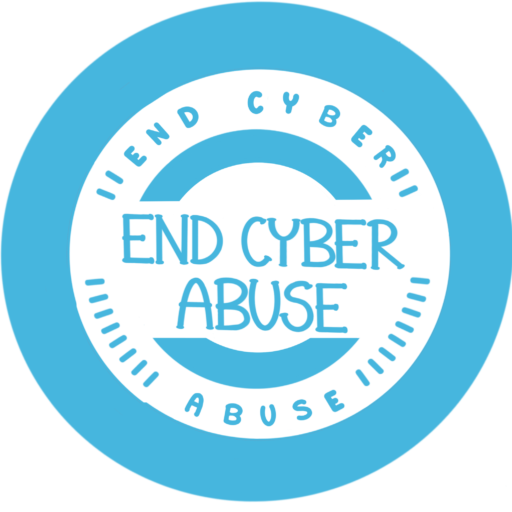Image-based Sexual Abuse: An Introduction
What is image-based sexual abuse?
Image-based sexual abuse (commonly known as ‘revenge porn’) describes the act of sharing images or videos of an individual (the ‘victim’) that are sexually explicit (displaying nudity or showing the person engaged in a sexual act) without that person’s consent. The images or videos may be shared on specialized ‘revenge porn’ websites, on social media, via email, text, or messaging services, or shared with specific individuals, such as the victim’s family or employers. The images may also be shared offline. Sharing images or videos that have been photoshopped or otherwise altered in any way may also be considered image-based sexual abuse.
Consent is required at two stages: when the image or video is taken and again when it is shared with any third party. In some cases, the first level of consent is missing, and the images are not obtained with consent: for instance, the victim may have been unaware the image was taken, coerced into sharing the image, or the perpetrator may have stolen or hacked the image. In other cases, an image that was shared freely in the context of an intimate relationship is then shared with others without the victim’s consent.
Why do we call it image-based sexual abuse?
This form of abuse is widely known as ‘revenge porn,’ often understood in the context of a vengeful ex-partner distributing sexual images or videos of their former partner following the breakdown of their relationship.
However, the term ‘revenge porn’ does not fully reflect the scope, motivation and nature of the crime, and how it is experienced by victims. Offenders might be motivated by a range of factors beyond revenge: financial gain, the desire for power or control over the victim, the desire to coerce or harass the victim, or the desire for fame, social status or notoriety. In addition, the emphasis on ‘revenge’ shifts the focus away from the harm done, using victim-blaming language.
Victims of image-based sexual abuse have spoken publicly about the detrimental impact the crime has on their life. These accounts give an insight into the far-reaching impact of the crime and offer further evidence of the inadequacy of the term ‘revenge porn’. Sharing sexually explicit images of an individual without that person’s consent is not ‘pornography’ – it is abuse, and should be understood as such. For that reason, women’s rights campaigners, academics, and others are advocating for new terminology: ‘image-based sexual abuse’. The term ‘image-based sexual abuse’ clearly reflects its nature as a form of gender-based violence (GBV).

How is image-based sexual abuse a form of GBV?
GBV is defined as “violence that is directed against a woman because she is a woman or that affects women disproportionately.” (CEDAW Committee, General Recommendation 19, 1992, Para. 6)
Violence in this context is defined in its broadest sense, as a means of exerting oppression and control, whether through an overt physical act or through psychological pressure, coercion, intimidation or harassment. There are a number of reasons why we would consider image-based abuse as a type of GBV: perpetrators of image-based sexual abuse are usually men and their victims are usually women.
Image-based sexual abuse can often take place in the context of an abusive relationship. In these cases, the release or the threat to release images is part of a pattern of domestic abuse, allowing the abuser to maintain control over the victim. The threat to release the images may be used as a blackmail tool: a perpetrator may threaten to share the images unless the victim engages in sexual acts, stays in the relationship, or engages in some other unwanted behaviour.
While image-based sexual abuse often involves a perpetrator sharing images that were initially created consensually in the context of an intimate relationship, this is not always the case. A perpetrator may obtain an image by coercion, secret recording, hacking, deception, online by webcam, in public through ‘upskirting’ or ‘downblousing,’ or by a trafficker or rapist without the victim’s consent. The perpetrator may or may not be known to the victim. They may, in some cases, be involved in an exploitative and non-consensual relationship.
Crimes of this nature are considered a form of GBV: perpetrators, usually men, are motivated by a desire to exert oppression or control over their victims, usually women.
What impact does image-based sexual abuse have on its victims?

Victims of image-based sexual abuse report serious and sustained psychological distress as a result of the crime, including post-traumatic stress disorder, anxiety and depression.
When an image is shared without consent, victims experience a sense of violation and feel a loss of control. Victims can no longer control who views their body and as such, their bodily autonomy is compromised. In this sense, the mental health effects of image-based sexual abuse are similar to those reported by survivors of sexual assault.
Victims of image-based sexual abuse may also experience harassment which can have far reaching personal and professional consequences. In the United States, research by the Cyber Civil Rights Initiative found that over 50% of victims reported that their photograph appeared next to their full name and a social network profile, while over 20% stated the photograph appeared next to their email address and telephone numbers.
Victims may fear physical attack, a fear that increases where personal data is shared alongside the image and where comments are posted online encourage further violence.
Victims of image-based sexual abuse can lose their jobs, homes, and be ostracised from their families, or their cultural or religious communities. Any or all of these contribute to a victim’s loss of identity.
As with other forms of GBV, victims of image-based sexual abuse may be held partially or wholly responsible for the crime, referred to as ‘victim blaming’. The psychological impact of victim blaming is well documented, with the experience described as like a ‘second assault’ or ‘secondary victimization’.
Where victims experience blame from professional support services, this may lead to the victim questioning the efficacy of those services. Victim blaming results in silencing – women fear being blamed and therefore do seek out the services and support that they need.
Image-based sexual abuse is a violation of women’s human rights to live free from GBV and discrimination, and to enjoy privacy. Image-based sexual abuse must be criminalized, and allegations must be investigated and, where appropriate, prosecuted. If not responded to appropriately, gross violations of this kind harm society by normalizing violence against women.
Are there any laws that respond to image-based sexual abuse?
The nature and scope of laws that address image-based sexual abuse vary from country-to-country. Some countries, such as Canada and France, have introduced specific legislation to criminalize image-based sexual abuse. In other countries, such as India, image-based sexual abuse is criminalized under existing laws on voyeurism, privacy and information technology. In many contexts, such as in Bangladesh, pornography in general is banned, bringing image-based sexual abuse under the ambit of those laws, but potentially resulting in negative repercussions for survivors who consensually share images that the state deems ‘pornographic.’ In some countries, image-based sexual abuse is also a civil offence, for example under the tort of privacy or civil defamation, and victims may be entitled to compensation or damages for the harms suffered. To better understand the legislative framework around image-based sexual abuse, we have compiled the following country-specific factsheets which set out the criminal and civil legal remedies available to victims and what gaps exist in those laws and their implementation.
Relevant Sources
- Radhika Shanghani, Jennifer Lawrence is Right: The Long-Term Effects of Revenge Porn Live On, August 11, 2017
- Sara Hussein, Surviving Revenge Porn – 3 Indian Women Share their Experience, November 29, 2018
- Mainichi Japan, The Repercussions of Revenge Porn, January 23, 2017
- Marc Ellison, We Were Victims of Revenge Porn, March 6, 2018
- McGlynn, Rackley and Hougton, Beyond ‘Revenge Porn’: The Continuum of Image-Based Sexual Abuse, Feminist Legal Studies, Volume 25, Issue 1, pp. 25-46, April 2017
- Australian Government, Office of the eSafety Commissioner, Image-Based Abuse, National Survey: Summary Report, October 2017
- McGlynn and Rackley, Image Based Sexual Abuse: More Than Just ‘Revenge Porn’
- Ullman, Social Reactions, Coping Strategies, and Self-Blame Attributions in Adjustment to Sexual Assault, Psychology of Women Quarterly, Volume 20, Issue 4, December 1996, p.505-526
- DeKeseredy and Schwartz, Thinking Sociologically About Image-Based Sexual Abuse: The Contribution of Male Peer Support Theory, December 21, 2016
- Bates, Revenge Porn and Mental Health: A Qualitative Analysis of the Mental Health Effects of Revenge Porn on Female Survivors, June 20, 2016


